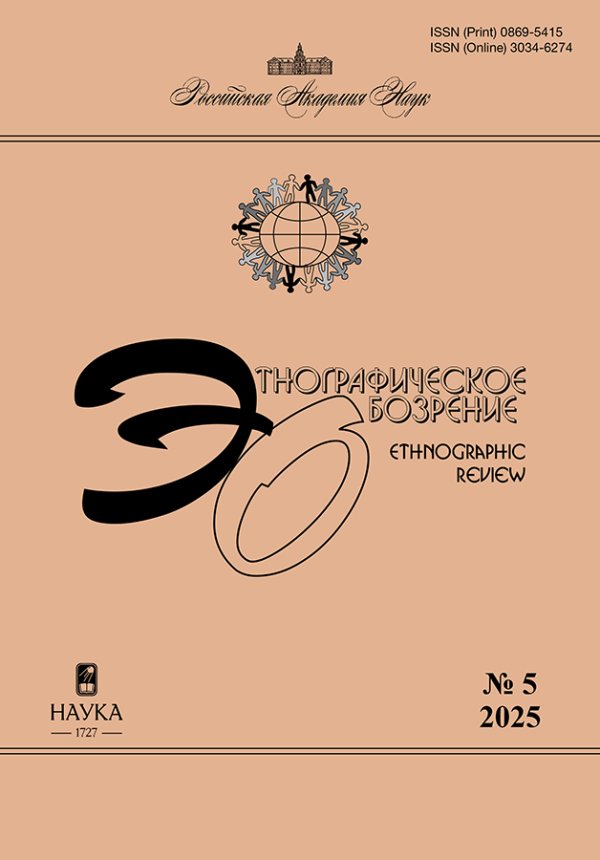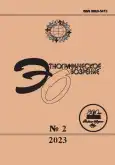Non diis curae: the rhetoric and practices of natural punishment for sacrilege
- Authors: Drozdov S.T1
-
Affiliations:
- European University at St. Petersburg
- Issue: No 2 (2023)
- Pages: 134-152
- Section: Articles
- URL: https://journals.rcsi.science/0869-5415/article/view/144873
- DOI: https://doi.org/10.31857/S0869541523020070
- EDN: https://elibrary.ru/RAPGDT
- ID: 144873
Cite item
Full Text
Abstract
Keywords
About the authors
S. T Drozdov
European University at St. Petersburg
Email: sdrozdov@eu.spb.ru
St. Petersburg, Russia
References
- Иванов С.А. Блаженные похабы: культурная история юродства. М.: Языки славянских культур, 2005.
- Лещинский А.Н. Особенности богородичного движения в России (из опыта социально-философского анализа). М.: РОИР, 2005.
- Лихачев Д.С., Панченко А.М., Понырко Н.В. Смех в Древней Руси. Л.: Наука, 1984.
- Масагутова М.Р. "Как оно ни есть, а все равно беседа была": онлайн-трансляции как новая религиозная практика общины чуриковцев // Этнография. 2021. № 4 (14). С. 138-157. https://doi.org/10.31250/2618-8600-2021-4(14)-138-157
- Панченко А.А. О пользе святотатства, или Pussy Riot глазами антрополога // Отечественные записки. 2013. № 1. С. 217-227.
- Штырков С.А. Наказание святотатцев: фольклорный мотив и нарративная схема // Труды факультета этнологии. Вып. 1 / Отв. ред. А.К. Байбурин. СПб.: Изд-во ЕУСПб, 2001. С. 198-210.
- Юргенсмейер М. "Ужас Мой пошлю пред тобою". Религиозное насилие в глобальном масштабе. М.: НЛО, 2022.
- Asad T. On Suicide Bombing. N.Y.: Columbia University Press, 2007.
- Butler J. The Sensibility of Critique: Response to Asad and Mahmood // Is Critique Secular?: Blasphemy, Injury, and Free Speech / Eds. T. Asad, W. Brown, J. Butler, S. Mahmood. Berkeley: University of California Press, 2009. P. 95-130. https://doi.org/10.1515/9780823252381-005
- Clay E. The Orthodox Church of the Sovereign Mother of God/The New Cathar Church // Revisionism and Diversification in New Religious Movements / Ed. E. Barker. L.: Routledge, 2013. P. 93-94.
- Cliteur P., Herrenberg T. The Fall and Rise of Blasphemy Law. Leiden: Leiden University Press, 2016.
- Emirbayer M., Mische A. What Is Agency? // American Journal of Sociology. 1998. Vol. 103 (4). P. 962-1023. https://doi.org/10.1086/231294
- Favret-Saada J. An Anthropology of Religious Polemics: The Case of Blasphemy Affairs // HAU: Journal of Ethnographic Theory. 2016. Vol. 6 (1). P. 29-45. https://doi.org/10.14318/hau6.1.003
- Goode E., Ben-Yehuda N. Moral Panics: The Social Construction of Deviance. Malden: Wiley-Blackwell, 2009.
- Hanegraaff W.J. New Age Religion and Western Culture: Esotericism in the Mirror of Secular Though. Leiden: Brill, 1996.
- Hewson M. Agency // Encyclopedia of Case Study Research / Eds. A.J. Mills, G. Durepos, E. Wiebe. Thousand Oaks: Sage Publications, Inc., 2010. P. 13-17.
- Jones J. Let Me Take You Down: Inside the Mind of Mark David Chapman, the Man Who Killed John Lennon. N.Y.: Villard Books, 1992.
- Jones P. Blasphemy, Offensiveness and Law // British Journal of Political Science. 1980. Vol. 10 (2). P. 129-148. https://doi.org/10.1017/S0007123400002064
- Levy L.W. Blasphemy: Verbal Offense against the Sacred, from Moses to Salman Rushdie. Chapel Hill: University of North Carolina Press, 1995.
- Nash D. Blasphemy in the Christian World: A History. Oxford: Oxford University Press, 2007.
- Oustinova-Stjepanovic G. End of Organized Atheism: The Genealogy of the Law on Freedom of Conscience and Its Conceptual Effects in Russia // History and Anthropology. 2020. Vol. 31 (5). P. 600-617. https://doi.org/10.1080/02757206.2019.1684271
- Philo S. British Invasion: The Crosscurrents of Musical Influence. Lanham: Rowman & Littlefield, 2015.
- Temperman J., Koltay A. Blasphemy and Freedom of Expression: Comparative, Theoretical and Historical Reflections after the Charlie Hebdo Massacre. Cambridge: Cambridge University Press, 2017.
- Turner S. Beatles ‘66: The Revolutionary Year. N.Y.: Ecco, 2016.
- Walter N. Blasphemy Ancient and Modern. London: Rationalist Press Association, 1990.
- Wiener J.Come Together: John Lennon in His Time. Champaign: University of Illinois Press, 1991.
Supplementary files










